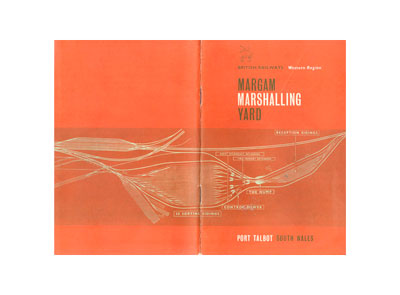Description
Soon after nationalization, it was realized that British Railways wagon load freight operation was losing vast sums of money. Partly due to road competition, and partly due to historical factors. Frightened of creating a monopoly, governments in the 19th c imposed “Common Carrier” obligations on the companies (all traffic had to be accepted at carriage rates laid down by tribunals, even if loss-making) and traders were allowed to send traffic in their own wagons at cheaper rates than if railway company wagons were used. The vast majority of these “Private Owner” wagons were small, of 10 tons capacity, and had to be returned empty to the owners. The wasted mileage was enormous, and could not be allowed in wartime, so the PO wagons were requisitioned and became common user vehicles. British Railways therefore inherited a huge fleet of small elderly wagons, in a poor state of repair. The majority of wagon journeys involved at least two visits to marshaling yards to be made up into fresh trains.
Under the 1955 Modernisation Plan it was decided to replace dozens of small marshaling yards with just three or four big ones for each region, located near centres of industry. The amount of land, and the civil engineering works involved were colossal. The yards had to be laid out to a continous grade, so that wagons could travel under gravity to the end of the longest sidings.
Hills had to be moved, rivers , diverted and valleys filled. Margam took three years to build opening in 1960. From an early stage the yard was not used at capacity: by the late 1960s road competition was biting hard into the railways’ goods traffic, and in particular the wagon-load freight that required yards like Margam was already declining rapidly. The requirement to operate as a “Common Carrier” was abolished in the 1962 Transport Act, and the economic malaise and industrial decline of the 1970s excerbated the loss of wagon load traffic. However steel making activity has ensured that Margam has continued to operate on a reduced scale.
Unlike Tees Yard for example, one of three planned to serve the North Eastern Region. The official opening of Tees Yard in 1963, took place on the same day as the General Manager’s Office Outing – an agreeable custom observed at York H.Q. since North Eastern Railway days, but now taking place for the last time because of the economic stringencies of Dr. Beeching’s administration. This was not a drink fueled “Beano”, but a genteel day out, either in the country, or at the seaside. Staff paid a small subscription throughout the year, were given an extra free pass and day off, and arrangements made by a small committee, including reserved accommodation on trains, strengthened by additional carriages if need be, and bookings made for lunch and tea.
The chosen venue was Redcar, because of its proximity to Tees Yard, so that after the opening, General Manager Arthur Dean, and other officers, could join the party for tea. (The Yard opening was followed by an expansive lunch, so they werhttps://cld.pt/dl/download/91bd0cca-eb4e-4c83-a79d-26233a1564ec/margam%20MARSHALLING%20YARD.pdf?download=truee unavailable earlier) Four members of the GM’s staff (a civil engineer on secondment, and three Traffic Apprentices just out of training) were unable to participate in the outing. They were working on an urgent job “Exercise Coalpipe”, a census of wagon load traffic moving between collieries and power stations. This would form the basis for planning “Merry-go-Round” train working, and remove much of the necessity for building Tees Yard in the first place…
PREVIEW BELOW – MAY TAKE A WHILE TO LOAD.

Reviews
There are no reviews yet.